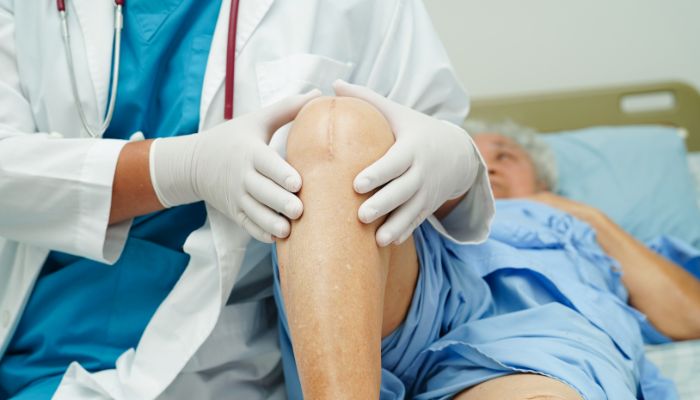
Knee Replacement Surgery
Knee replacement surgery, also known as knee arthroplasty, is a surgical procedure where a damaged or diseased knee joint is replaced with an artificial joint (prosthesis). It is typically performed to relieve pain and improve function when other treatments, such as medications or physical therapy, are no longer effective.
When Is Knee Replacement Surgery Needed?
- Osteoarthritis: The most common reason, where the cartilage in the knee wears down, causing pain and stiffness.
- Rheumatoid Arthritis: An autoimmune condition leading to joint inflammation and damage.
- Knee Injuries: Severe knee fractures or ligament damage that cannot be repaired by other means.
- Other Conditions: Conditions like gout or avascular necrosis that affect the knee joint.
Types of Knee Replacement
- Total Knee Replacement (TKR):
- Procedure: The entire knee joint is replaced, including the femoral (thigh), tibial (shin), and patellar (kneecap) components.
- Indications: Severe arthritis or extensive joint damage.
- Partial Knee Replacement (PKR):
- Procedure: Only the damaged portion of the knee joint is replaced.
- Indications: When only one part of the knee is affected by arthritis or damage.
- Robotic-Assisted Knee Replacement:
- Procedure: A robotic system is used to assist in the placement of the prosthesis for greater precision.
- Indications: Used for more accurate alignment and positioning of the artificial joint.
Benefits of Knee Replacement Surgery
- Pain Relief: Significant reduction in knee pain, especially with conditions like arthritis.
- Improved Mobility: Restores knee function and allows for more normal movement, including walking, climbing stairs, and participating in low-impact activities.
- Enhanced Quality of Life: Alleviates the limitations caused by knee pain, allowing patients to return to daily activities with greater ease.
Knee replacement surgery is an effective treatment for individuals suffering from severe knee pain and limited mobility, helping them return to an active lifestyle. With advancements in surgical techniques and rehabilitation, the procedure offers long-term relief and improved quality of life.